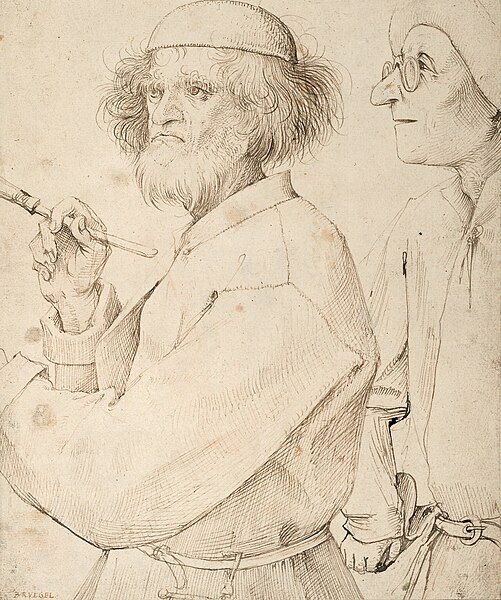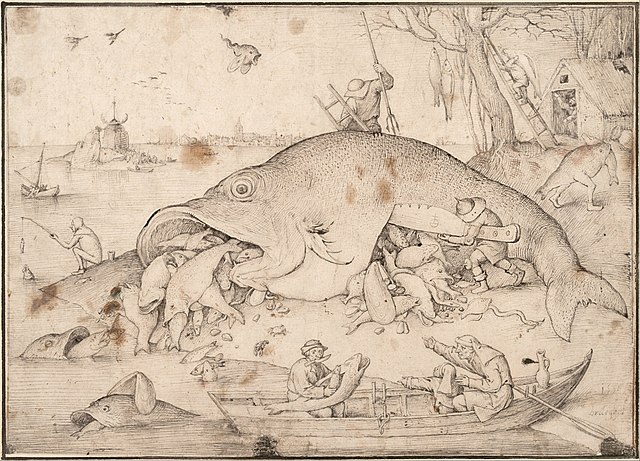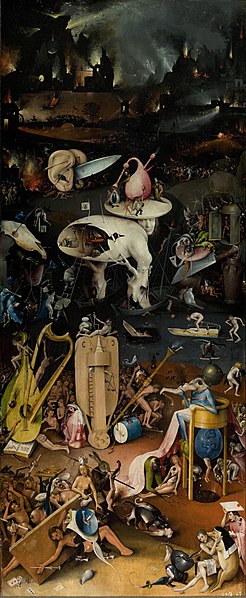Pieter Bruegel the Elder was among the most significant artists of Dutch and Flemish Renaissance painting, a painter and printmaker, known for his landscapes and peasant scenes ; he was a pioneer in presenting both types of subject as large paintings.
The Painter and The Connoisseur, c. 1565, possibly Bruegel's self-portrait
Engraving designed by Bruegel and published by Hieronymus Cock, The Seven Deadly Sins or the Seven Vices – Anger, 1558
The Blind Leading the Blind, 1568
The Big Fish Eat the Little Fish, Bruegel's drawing for a print, 1556
Dutch and Flemish Renaissance painting
Dutch and Flemish Renaissance painting represents the 16th-century response to Italian Renaissance art in the Low Countries, as well as many continuities with the preceding Early Netherlandish painting. The period spans from the Antwerp Mannerists and Hieronymus Bosch at the start of the 16th century to the late Northern Mannerists such as Hendrik Goltzius and Joachim Wtewael at the end. Artists drew on both the recent innovations of Italian painting and the local traditions of the Early Netherlandish artists.
The Fall of Icarus, now considered a copy of Pieter Bruegel the Elder
Hell, the right panel from the triptych The Garden of Earthly Delights by Hieronymus Bosch
Cornelis Aerentsz van der Dussen by Jan van Scorel (c. 1535) Panel, Weiss Gallery, London







